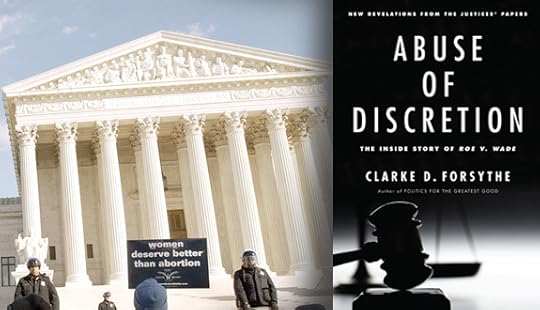Roe v. Wade: The History and the Truth

Roe v. Wade: The History and the Truth | Christopher White | Catholic World Report
An interview with Clarke D. Forsythe, author of Abuse of Indiscretion: The Inside Story of Roe v. Wade
Forty
years after Roe
v. Wade, we
are just now learning the back history to the Supreme Court decision
that allowed abortion on demand to become a national policy. In his
insightful and well-researched new book, Abuse
of Indiscretion: The Inside Story of Roe v. Wade (Encounter
Books, 2013), Clarke
D. Forsythe chronicles the complicated history and political details
that led to the most sweeping Supreme Court decision in our history.
Recently, Catholic
World Report, caught
up with Forsythe, Senior
Counsel at Americans United for Life, to discuss the twenty years
of research that went into this important book.
CWR:
The
"right to privacy" established in Griswold
v. Connecticut served
as a precursor for Roe
v. Wade.
Was Griswold the
decision that ultimately paved the way for the justices’
endorsement of legal and unlimited abortion in the United States?
Forsythe:
Not
entirely by itself. The Justices pointed to a number of decisions
that they said created a right to privacy, including the 1972
decision in Eisenstadt
v. Baird—also
heard during the fifteen-week twin vacancies after the retirements of
Justices Black and Harlan in the fall of 1972—which significantly
extended Griswold to strike down regulations on the sale of
contraceptives to single people. The justices largely abandoned the
right to privacy in 1992 in Planned
Parenthood v. Casey
and justified Roe
on the basis of the “reliance interests” of women in abortion as
a back-up to failed contraception—the new glue that holds together
the right to abortion.
CWR:
Most
non-legal scholars overlook the significance of Roe
v. Wade's companion
case, Doe
v. Bolton.
Why do you insist that Doe
is
so important?
Forsythe:
Two
main reasons: First, it is Roe
and Doe
together
which gave us the national policy of abortion for any reason, at any
time of pregnancy. Roe
declared
a right to abortion up to fetal viability; Doe gave us the “health”
exception (defined as “emotional well-being”) after fetal
viability, which is left to the discretion of the provider.
Secondly, Doe
struck down the 1968 Georgia law as too strict, which allowed
abortion in certain circumstances, including the health and safety
regulations in the Georgia laws.
CWR:
Given
the cultural currents of the sixties and seventies—more women in
the workforce, increased sexual license, concerns of overpopulation,
and so forth—weren't the justices that decided Roe
and
Doe
just
confirming public opinion on the matter of abortion?
Continue reading at www.CatholicWorldReport.com.
Carl E. Olson's Blog
- Carl E. Olson's profile
- 20 followers



